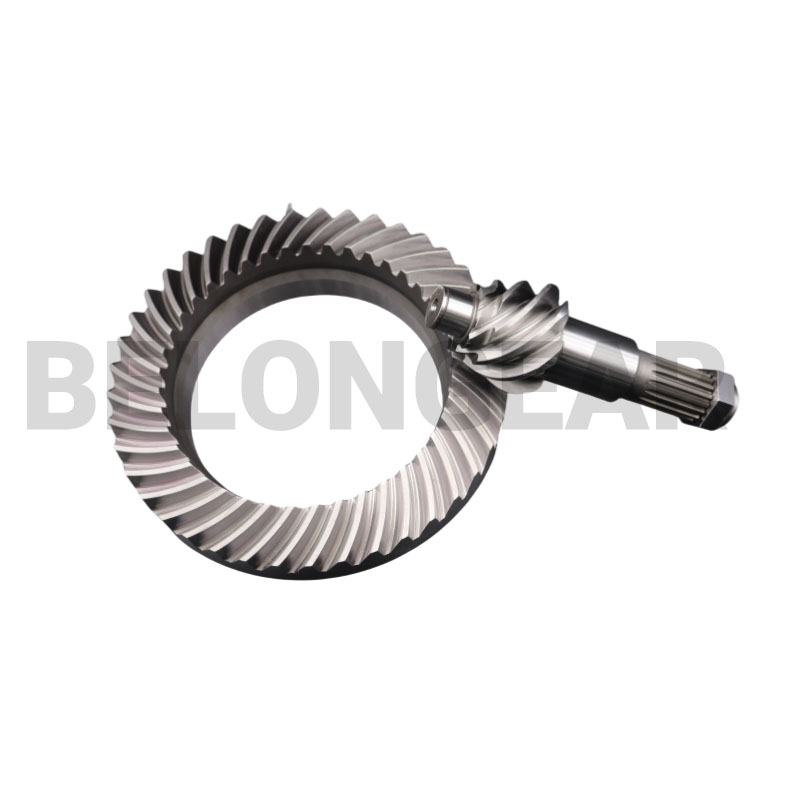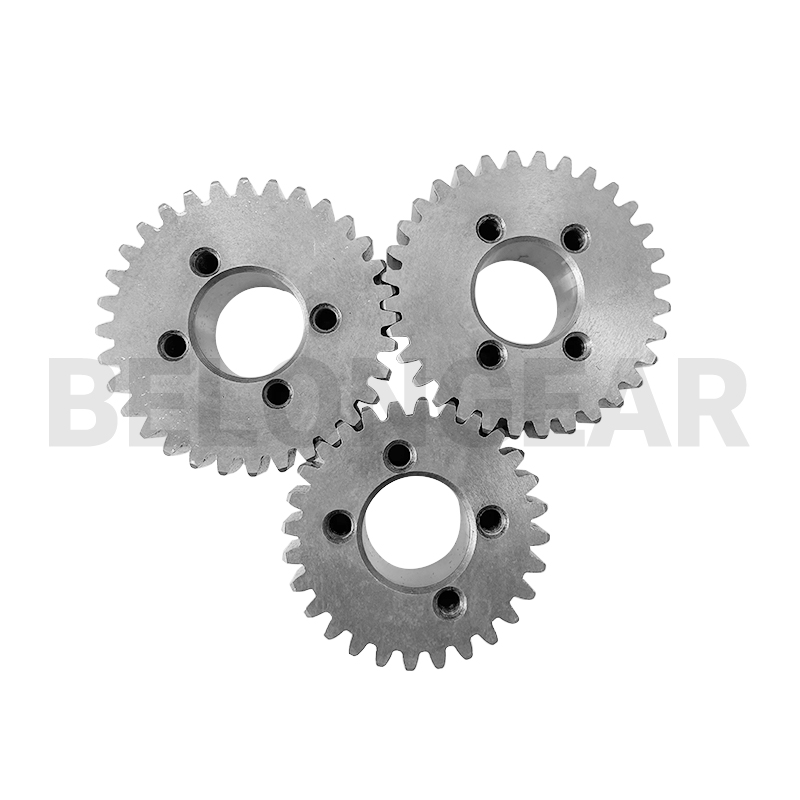Gears rely on their own structural dimensions and material strength to withstand external loads, which requires materials to have high strength, toughness and wear resistance; due to the complex shape of the gears, the gears require high precision, and the materials also require good manufacturability. Commonly used materials are forged steel, cast steel, and cast iron.

1. Forged steel According to the hardness of the tooth surface, it is divided into two categories:
When HB <350, it is called soft tooth surface
When HB >350, it is called hard tooth surface
1.1. Tooth surface hardness HB<350
Process: forging blank → normalizing - rough turning → quenching and tempering, finishing
Commonly used materials; 45#, 35SiMn, 40Cr, 40CrNi, 40MnB
Features: It has good overall performance, the tooth surface has high strength and hardness, and the tooth core has good toughness. After heat treatment, the precision of Gears cutting can reach 8 grades. It is easy to manufacture, economical, and has high productivity. The precision is not high.

1.2 Tooth surface hardness HB >350
1.2.1 When using medium carbon steel:
Process: Forging blank → normalization → rough cutting → quenching and tempering → fine cutting → high and intermediate frequency quenching → low temperature tempering → honing or abrasive running-in, electric spark running-in.
Commonly used materials: 45, 40Cr, 40CrNi
Features: The tooth surface hardness is high HRC=48-55, the contact strength is high, and the wear resistance is good. The tooth core maintains toughness after quenching and tempering, has good impact resistance and high load-bearing capacity. The accuracy is reduced by half, up to level 7 accuracy. Suitable for mass production, such as medium-speed and medium-load transmission gears for automobiles, machine tools, etc.
1.2.2 When using low carbon steel: Forging blank → normalization → rough cutting → quenching and tempering → fine cutting → carburizing and quenching → low temperature tempering → tooth grinding. Up to 6 and 7 levels.
Commonly used materials; 20Cr, 20CrMnTi, 20MnB, 20CrMnTo Features: Tooth surface hardness and strong bearing capacity. The core has good toughness and impact resistance. It is suitable for high-speed, heavy-load, overload transmission or occasions with compact structure requirements, as the main transmission gear of locomotives and aviation gears.
2. Cast steel:
When the gear diameter d>400mm, the structure is complicated, and the forging is difficult, the cast steel material ZG45.ZG55 can be used for normalizing. Normalization, quenching and tempering.
3. Cast iron:
Strong resistance to adhesion and pitting corrosion, but poor resistance to impact and abrasion. It is suitable for stable work, low power, low speed or large size and complicated shape. It can work under oil shortage conditions and is suitable for open transmission.
4. Metallic material:
Fabric, wood, plastic, nylon, suitable for high speed and light load.
When selecting materials, consideration should be given to the fact that the working conditions of gears are different, and the failure forms of gear teeth are different, which are the basis for determining the strength calculation criteria of the gear and the selection of materials and hot spots.
1. When the gear teeth are easily broken under impact load, materials with better toughness should be selected, and low carbon steel can be selected for carburizing and quenching.
2. For high-speed closed transmission, the tooth surface is prone to pitting, so materials with better tooth surface hardness should be selected, and medium carbon steel surface hardening can be used.
3. For low-speed and medium-load, when gear tooth fracture, pitting, and abrasion can occur, materials with good mechanical strength, tooth surface hardness and other comprehensive mechanical properties should be selected, and medium-carbon steel quenched and tempered can be selected.
4. Strive to have a small variety of materials, easy to manage, and consider resources and supply. 5. When the structure size is compact and the wear resistance is high, alloy steel should be used. 6. The equipment and technology of the manufacturing unit.
Post time: Mar-11-2022




